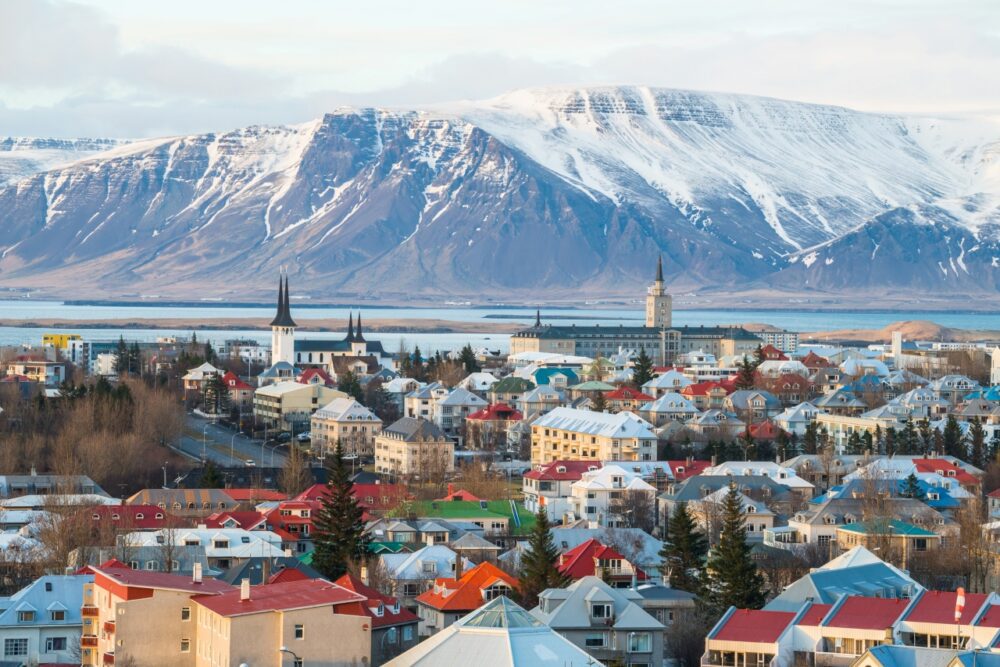
Introduction
Few places on Earth captivate the imagination like Iceland. With its otherworldly landscapes, geothermal wonders, and stark beauty, Iceland feels like stepping into another world. Whether you’re watching the Northern Lights dance across the sky, soaking in a hot spring under a midnight sun, or hiking through dramatic volcanic landscapes, Iceland is a place of natural extremes and unforgettable adventures.
I first visited Iceland on a whim, tempted by photos of black sand beaches and glowing ice caves, and I’ve been hooked ever since. Despite its remote location, Iceland is incredibly accessible, especially for a country that offers so much dramatic scenery and adventure in one place. Here’s why this remarkable country should be on your travel list.
Table of Contents
Reasons You Should Visit Iceland
1. Breathtaking Natural Landscapes
The main reason most people visit Iceland is to experience its jaw-dropping landscapes. From towering waterfalls and sprawling glaciers to black sand beaches and volcanic craters, the country feels like a series of natural wonders on an epic scale. The beauty of Iceland is that you don’t have to travel far to see something spectacular—everything seems within reach.
I’ll never forget my first visit to Skógafoss, one of Iceland’s most famous waterfalls. Standing at the base of this powerful cascade, drenched by the mist, it’s impossible not to be awed by the raw force of nature. Another highlight for me was hiking to Sólheimajökull Glacier, where you can literally walk on ice that’s been forming for thousands of years. Iceland’s landscapes are wild, unspoiled, and utterly unique.
2. A Geothermal Wonderland
Iceland sits on the Mid-Atlantic Ridge, which means the entire country is geothermal heaven. Everywhere you go, you’ll find bubbling hot springs, spouting geysers, and volcanic landscapes that are unlike anything you’ve ever seen. One of the highlights of any trip to Iceland is visiting the famous Blue Lagoon near Grindavik. Soaking in its warm, milky blue waters with volcanic rocks surrounding you is an experience like no other.
But the Blue Lagoon is just the beginning. There are natural hot springs hidden all over the country. During one road trip, I stumbled upon a secluded pool near Hveragerði, where I spent a peaceful afternoon soaking in warm waters under the open sky, surrounded by rolling hills and steam vents. If you’re looking for relaxation combined with adventure, Iceland’s geothermal sites are not to be missed.
3. The Northern Lights and Midnight Sun
Depending on the season, Iceland offers two extraordinary natural phenomena: the Northern Lights in winter and the Midnight Sun in summer. The Northern Lights are magical, with their green and purple lights shimmering across the dark sky. I was lucky enough to see them while staying in Akureyri in the north. Wrapped in blankets, I stood in awe as the lights swirled above—an experience I’ll never forget.
In summer, the opposite happens—the sun barely sets, creating a surreal, endless twilight. This is perfect for road trips and exploring late into the night. I remember hiking in the Snaefellsnes Peninsula at midnight, the sky still glowing with golden light, and feeling like I had the whole world to myself. Whether you visit for the Northern Lights or the Midnight Sun, Iceland offers a truly unique connection with the natural world.
4. Adventure and Outdoor Activities
Iceland is an adventurer’s paradise. Whether you’re hiking across glaciers, snowmobiling on volcanic peaks, or snorkelling between tectonic plates at Þingvellir National Park, there’s no shortage of activities to get your adrenaline pumping. I went horse riding on an Icelandic pony near Selfoss, where we galloped through fields of lava rocks and moss—a thrilling way to see the landscape.
If you’re into hiking, the trails in Iceland are some of the best in the world. One of my favourite hikes was through Landmannalaugar, a geothermal area with colourful rhyolite mountains and hot springs where you can take a dip after a long day of trekking. For a quieter experience, try kayaking among the icebergs in Jökulsárlón Glacier Lagoon. No matter where you go, Iceland’s landscape invites you to get outdoors and explore.
5. Unique Culture and Friendly People
Despite the country’s rugged and remote nature, Icelanders are some of the friendliest and most welcoming people you’ll ever meet. The country has a rich cultural history that stretches back to the Viking era, and you’ll find evidence of this everywhere, from the Saga Museum in Reykjavik to the ancient turf houses scattered throughout the countryside.
During my stay in a small village near Húsavík, I was invited to a local home for coffee and traditional kleina (a kind of Icelandic doughnut). It’s moments like these that make Iceland special—its people’s genuine warmth and hospitality. And with a thriving arts scene in cities like Reykjavik, you’ll find a modern, creative culture that balances Iceland’s ancient heritage with its forward-thinking attitude.
Best Places to Visit in Iceland
1. Reykjavik

Reykjavik, Iceland’s capital, is the perfect starting point for any Iceland adventure. This small but vibrant city feels more like a friendly town than a capital, with colourful houses, quirky cafés, and street art everywhere you look. I spent days wandering its streets, checking out the cutting-edge galleries, and enjoying seafood at the Old Harbour.
Don’t miss the Hallgrímskirkja, the iconic church that offers panoramic views over the city from its tower. Another highlight is the Harpa Concert Hall, with its striking glass facade that reflects the sea and sky. Reykjavik’s nightlife is also worth experiencing, with lively bars and music venues. After exploring, I loved relaxing at the local pools, like Laugardalslaug, a great spot to soak in geothermal waters alongside locals.
2. Akureyri
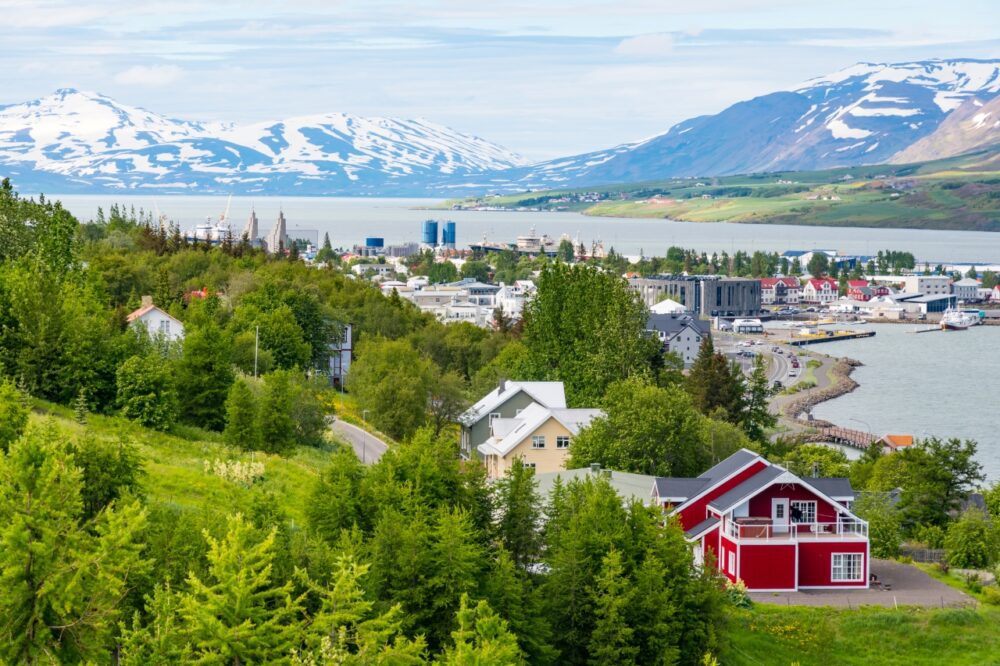
Located in the north, Akureyri is often referred to as the “Capital of the North.” Despite being much smaller than Reykjavik, it has a charming, laid-back vibe. I loved strolling through the Botanical Gardens and admiring the stunning views of the fjord. Akureyri is also a gateway to some of Iceland’s best outdoor adventures, including skiing, hiking, and whale watching.
One of the highlights of my time in Akureyri was driving the Diamond Circle, a scenic route that takes you to some of northern Iceland’s most incredible sights, like Goðafoss, a breathtaking waterfall, and Mývatn, a geothermal area with volcanic craters and hot springs. Akureyri offers the perfect mix of culture and nature, making it a great base for exploring the north.
3. Husavik
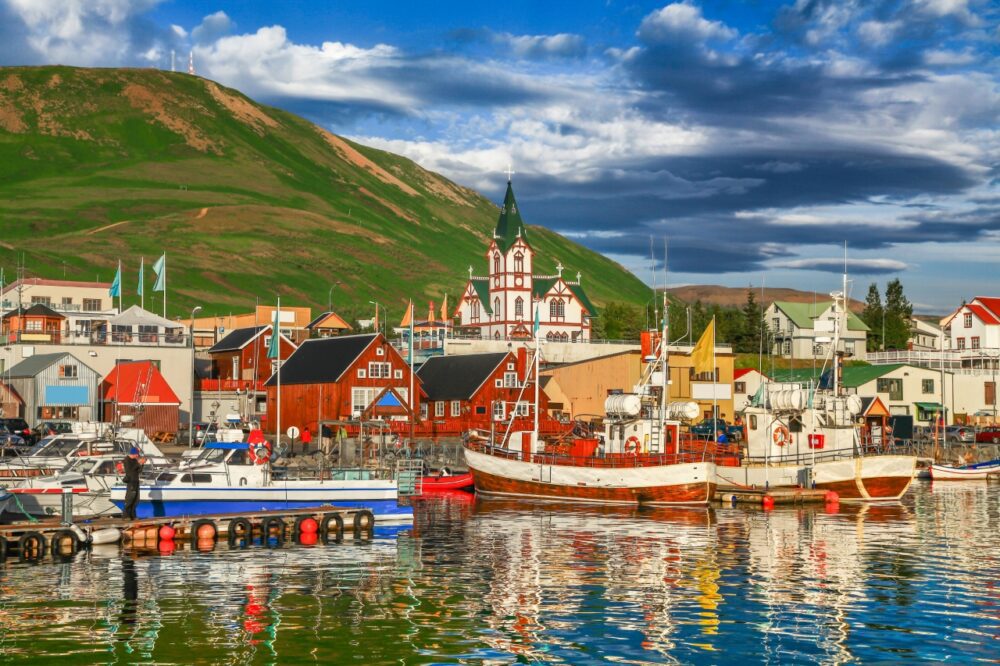
If you’re looking for an authentic Icelandic experience, head to Húsavík, often dubbed the whale-watching capital of Europe. The town sits on a stunning bay, and during the summer months, you can take boat trips to spot whales, including humpbacks, minkes, and even blue whales. I went on a tour with a local operator and was blown away by the sheer number of whales we saw breaching and spouting.
Húsavík is also home to the Whale Museum, which provides fascinating insights into these incredible creatures and the history of whaling in Iceland. After your whale-watching adventure, I recommend visiting the GeoSea Baths, where you can soak in hot seawater while gazing out over the Arctic Ocean.
4. Vik
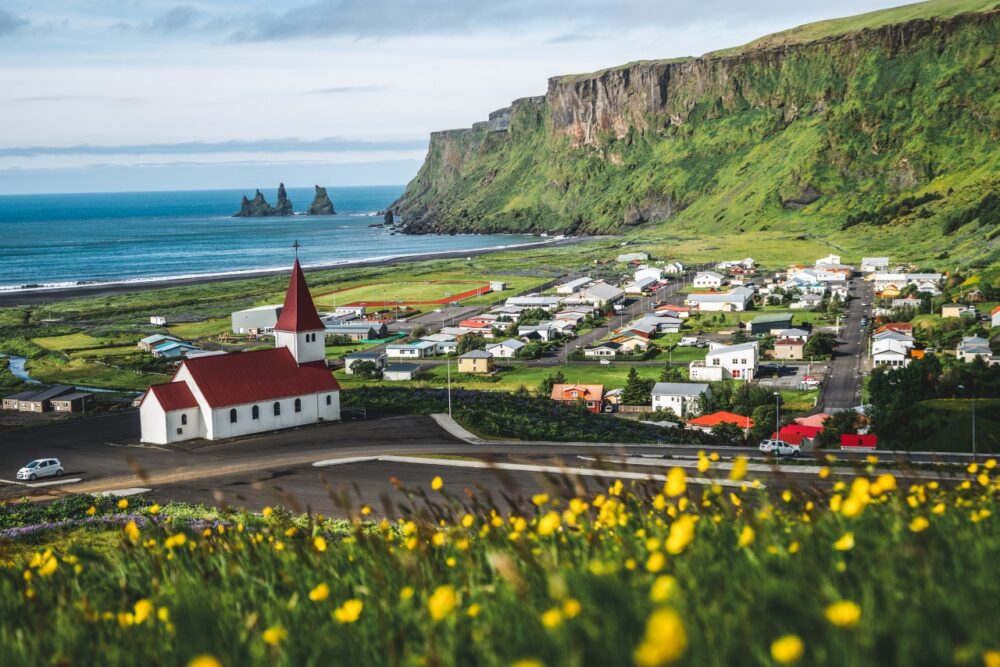
Vík, located on the southern coast, is a must-visit for anyone looking to experience Iceland’s dramatic black sand beaches. The beach at Reynisfjara, with its volcanic sand and towering basalt columns, is one of the most striking places I’ve ever seen. The nearby Dyrhólaey promontory offers panoramic views of the coast and is a great spot for birdwatching, including puffins in the summer months.
While Vík itself is a small village, it’s the perfect base for exploring Iceland’s south coast. From here, you can easily visit some of Iceland’s most famous waterfalls, like Seljalandsfoss, where you can walk behind the cascade, and Skógafoss, one of the country’s largest and most photogenic waterfalls.
5. Selfoss
Selfoss, located along the Golden Circle, is an ideal stop for those exploring Iceland’s most famous tourist route. While it’s often overlooked in favour of more famous stops like Geysir and Gullfoss, Selfoss is a great place to experience Icelandic small-town life and serves as a gateway to the South Coast.
One of my favourite day trips from Selfoss was to Kerið Crater, a volcanic crater lake with stunning red rocks and bright blue water. It’s an easy hike around the rim and offers fantastic photo opportunities. Selfoss is also close to Þingvellir National Park, a UNESCO World Heritage site where you can walk between the Eurasian and North American tectonic plates.
6. Snaefellsnes Peninsula
For a taste of Iceland’s wild, rugged beauty, the Snæfellsnes Peninsula is a must. This area is often called “Iceland in Miniature” because it packs so much variety into one place—volcanoes, glaciers, lava fields, and beaches. I spent a day hiking around Snæfellsjökull National Park, home to the glacier-capped Snæfellsjökull Volcano, which was famously featured in Jules Verne’s Journey to the Center of the Earth.
The picturesque Kirkjufell Mountain, often called the most photographed mountain in Iceland, is another highlight of the peninsula. The nearby Kirkjufellsfoss Waterfall is an ideal spot to take in the mountain’s beauty. The peninsula’s dramatic landscapes and fewer crowds make it a perfect place to escape and enjoy the solitude of nature.
7. Westfjords
If you want to get off the beaten track, the Westfjords offer some of the most remote and untouched landscapes in Iceland. This rugged region is a paradise for hikers and wildlife enthusiasts. One of the highlights of my trip was visiting Dynjandi, a magnificent waterfall that cascades down a series of terraces. The Westfjords are also a great place to spot puffins and Arctic foxes.
The region’s isolation means fewer tourists, so you can often find yourself alone in these dramatic landscapes. I stayed in a small guesthouse near Ísafjörður, the region’s largest town, and spent my days exploring hidden beaches and fjords. If you’re looking for true wilderness, the Westfjords won’t disappoint.
8. Grindavik
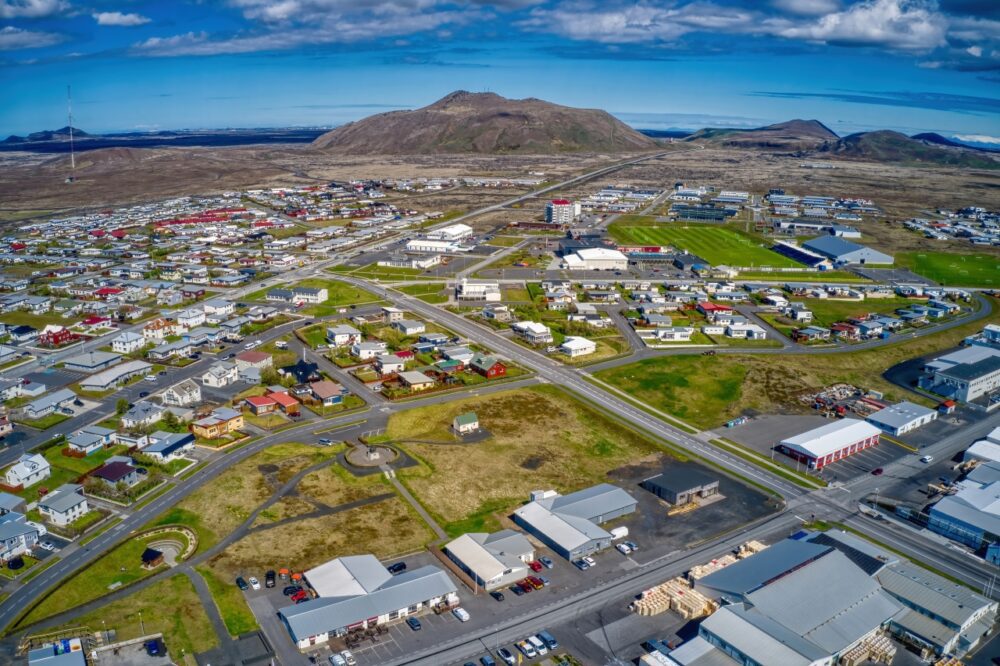
Grindavik, located near the famous Blue Lagoon, is a small fishing town that makes for a great base to explore Iceland’s volcanic southwest. Besides the Blue Lagoon, I recommend driving along the Reykjanes Peninsula, where you’ll find geothermal fields, mud pools, and the Bridge Between Continents, which spans the tectonic divide between Europe and North America.
The area also has stunning coastal landscapes, including the dramatic cliffs of Valahnúkamöl, where I watched waves crash against the black rock. If you want to combine relaxation with a little exploration, Grindavik is a fantastic option.
9. Seydisfjordur
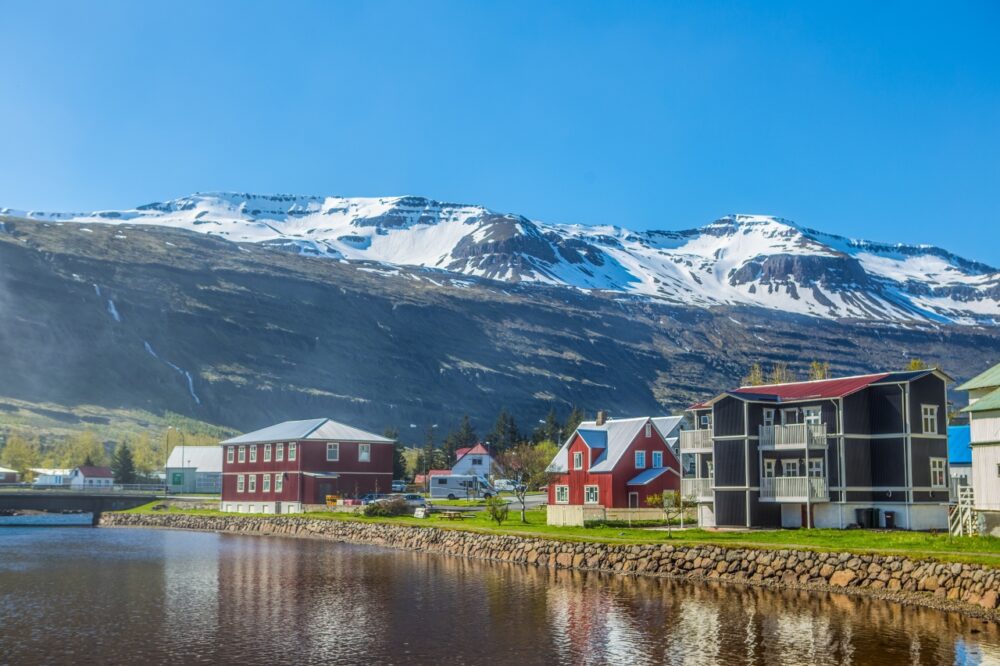
Located in eastern Iceland, Seyðisfjörður is a charming town surrounded by snow-capped mountains and picturesque fjords. It’s known for its colourful wooden houses, a legacy of the town’s Norwegian heritage. I loved wandering through the town’s quiet streets, where local artists sell their works, and stopping for a coffee at one of the cosy cafés.
The drive to Seyðisfjörður from Egilsstaðir is one of the most scenic routes in the country, taking you over a mountain pass with stunning views of waterfalls and fjords. The town also has a vibrant arts scene, hosting the LungA Festival, an annual celebration of art, music, and creativity.
10. Hofn

Höfn, located in southeast Iceland, is the gateway to the spectacular Vatnajökull Glacier, the largest glacier in Europe. The town is famous for its langoustine, and I had one of the best seafood meals of my life at a small harbour-side restaurant. Höfn is also a great base for exploring the Jökulsárlón Glacier Lagoon, where you can take a boat tour among the floating icebergs.
One of my favourite experiences was hiking near the Vatnajökull Glacier, where the landscape is a surreal mix of ice, volcanic ash, and glacial rivers. Höfn is a quiet town, but its proximity to some of Iceland’s most stunning natural sights makes it an ideal stop for any traveller.
Travel Tips for Iceland
Getting Around Iceland
The best way to get around Iceland is by renting a car, especially if you want to explore the countryside and follow the Ring Road that circles the island. Driving gives you the flexibility to visit natural wonders like waterfalls, geysers, and volcanoes at your own pace. In Reykjavik, public transport is limited to buses, and there are no trains, but the city is walkable. If you’re visiting during winter, make sure your vehicle is equipped for icy roads, and always check the weather forecast before heading out, as conditions can change quickly.
Best Time to Visit Iceland
The best time to visit Iceland depends on what you want to experience. Summer (June to August) is ideal for hiking, road trips, and enjoying the midnight sun, with 24-hour daylight and pleasant temperatures. It’s the best time for exploring the Highlands and seeing puffins. Winter (November to March) offers a chance to see the Northern Lights and experience Iceland’s snowy landscapes, though some roads may be closed due to snow. Spring and autumn are quieter, with fewer tourists and a chance to see the vibrant seasonal colours, though the weather can be unpredictable.
Passport and Visa Requirements for Iceland
Iceland is part of the Schengen Area, so visitors from EU/EEA countries can enter with just an ID card. Travellers from countries like the US, UK, Canada, and Australia can stay visa-free for up to 90 days within the Schengen Zone. Your passport should be valid for at least three months beyond your planned stay. If you’re planning to travel to neighbouring countries like Norway or Denmark, check their entry requirements too.
Currency and Banks in Iceland
Iceland uses the Icelandic Krona (ISK), and while credit and debit cards are widely accepted, even for small purchases, it’s a good idea to carry some cash for more remote areas or small businesses. ATMs are easy to find in Reykjavik and larger towns. Be aware that Iceland is largely a cashless society, so you can get by with just a card in most places. Tipping is not expected in Iceland, as service charges are typically included in the bill.
Language and Useful Phrases to Know
The official language is Icelandic, but almost everyone speaks fluent English, especially in tourist areas. However, learning a few basic Icelandic phrases can go a long way in connecting with locals. Try “Halló” (hello), “Takk” (thank you), and “Góðan daginn” (good day). Icelanders are friendly and appreciate the effort, even if it’s just a simple greeting in their language.
Budgeting and Costs for Iceland
Iceland is known for being expensive, but you can manage costs by planning ahead. Accommodation and dining out can be pricey, especially in Reykjavik, but staying in guesthouses or renting a self-catering apartment can help. Stock up on groceries at supermarkets like Bonus if you’re driving around the country. Fuel is another major cost, so consider carpooling or renting an energy-efficient vehicle. Many of Iceland’s best attractions—waterfalls, hot springs, and scenic drives—are free, so you can save on entertainment by sticking to nature.
Conclusion
Iceland is a country that offers an experience unlike any other, with its mix of geothermal wonders, dramatic landscapes, and rich culture. From the vibrant streets of Reykjavik to the untouched beauty of the Westfjords, every corner of Iceland has something unique to offer. Whether you’re chasing the Northern Lights, hiking through volcanic craters, or relaxing in a hot spring, Iceland’s wild beauty and friendly people will make your trip unforgettable.
What I love most about Iceland is how it invites you to slow down and truly experience nature—whether through the midnight sun, the Northern Lights, or the soothing waters of its thermal baths. It’s a country where adventure meets tranquillity, and every journey feels like a personal discovery. If you’re looking for a destination that will leave you breathless, Iceland should be at the top of your list.
